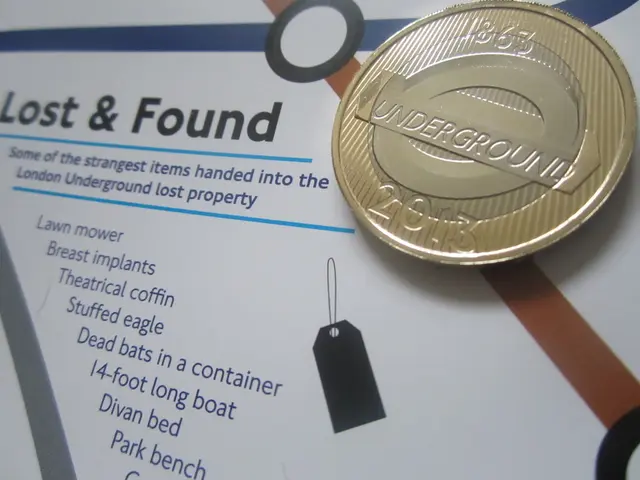A Fresh Take on eIDAS Regulation
The EU's eIDAS Regulation: An Overview
Say goodbye to the digital chaos of the past and step into the era of streamlined transactions and borderless connections with the eIDAS regulation! This groundbreaking EU law, a game-changer in the digital landscape, unites member states and revolutionizes the way we do business online. Here's what you need to know about the eIDAS revolution:
Dismantling the Digital Divide: A United EU
Before eIDAS, the digital world of the EU was a patchwork of varying rules, making cross-border collaboration a hassle. With little consensus on online identification and trust services among nations, the EU struggled to build a seamless Digital Single Market. But fear not, the eIDAS revolution has swept into town, bringing trust, security, and unity to the European Union's digital activities.
What is eIDAS All About?
The eIDAS regulation, short for "Electronic Identification, Authentication, and Trust Services," was the EU's answer to digital unification. Launched in 2016 and fully implemented by 2018, eIDAS has transformed the digital landscape, boosting trust, encouraging economic and social growth, and bridging national boundaries.
The eIDAS Magic: A Single Market in the Making
The European Union aspires to a connected Digital Single Market, where people and businesses can interact freely, devoid of barriers blocking cross-border transactions. eIDAS acts as the key to achieving the EU's dream. This regulation not only promotes economic and social growth but also prioritizes the protection of personal data and aligns with data protection directives.
The Pillars of eIDAS: Electronic Identification and Trust Services
eIDAS is made up of two core elements: Electronic Identification (eID) and Trust Services for Electronic Transactions. eID provides secure digital identification across EU member states, while trust services ensure reliable online activities.
Say Hello to Your Digital Self: Electronic Identification
'eID' refers to the modern methods by which individuals and entities are identified digitally. Member states provide these electronic identification methods via authorized eID schemes. eIDAS offers a comprehensive framework for electronic identification, establishing the requirements and standards for eID systems. It recognizes various types of eID, catering to the diverse needs of EU member states.
One significant principle in eIDAS is cross-border eID recognition, enabling people to use their eID in different EU countries with the same level of trust and validity. The LoA concept is used to categorize the strength of authentication methods, ranging from low to high, to accommodate various security requirements.
Trust Services: Building Unshakable Confidence
Trust is the beating heart of online activities. Trust services, digital tools that elevate security and reliability, are essential in the world of eIDAS. The regulations set clear guidelines for trust services such as electronic signatures, electronic seals, time stamping, electronic delivery services, and electronic documents.
- Electronic Documents: Anything in digital form, from text to audio recordings, is classified as an electronic document. eIDAS emphasizes the importance of these records, setting standards for their management to uphold their integrity, authenticity, and legal validity, paving the way for seamless collaboration in the online world.
- Electronic Signatures: eIDAS paves the way for accepting digital signatures as legally binding in various contexts, contributing to the widespread adoption of electronic transactions by businesses and individuals.
- Electronic Seals: Specializing in organizations, electronic seals act as a digital stamp of authenticity, confirming the legitimacy of documents and transactions in the digital domain.
- Time Stamps: These provide definitive references for the timing of electronic transactions, enhancing the legal value of digital records.
- Electronic Delivery Services: These services protect the integrity and confidentiality of electronic documents during transmission, ensuring data security in online communications.
A World Unlocked: Cross-Border Digital Services and Transactions
eIDAS fosters collaboration among member states to implement and enhance electronic identification and trust services, building a unified digital ecosystem. The regulations establish various mechanisms to achieve this:
- Interoperable Technical Standards: eIDAS sets guidelines for the technical interoperability of electronic ID systems, enabling smooth exchanges of identification information and fostering a unified online space.
- Mutual Recognition of eID: Member states must accept each other's national electronic identification (eID) schemes. Individuals can use their eIDs across EU borders, eliminating the need for multiple identities.
- Trusted Service Providers: Qualified Trust Service Providers (QTSPs) provide trustworthy electronic services. eIDAS ensures trustworthiness across borders by recognizing these services.
- Assurance Levels (eIDAS LoA): The LoA framework categorizes the strength of authentication methods, contributing to cross-border trust.
- Mutual Assistance: Supervisory bodies from each member state collaborate to share best practices and create a harmonized approach to digital services within the EU.
Lock Down Your Digital Activities: Security Measures and Standards
eIDAS has strict standards for security measures in electronic transactions, establishing various practices to guarantee data integrity and maintain trust. The regulation highlights the following measures:
- Conformity Assessment Bodies: These bodies assess, certify, and audit QTSPs to ensure compliance with eIDAS security standards.
- Qualified Trust Service Providers (QTSPs): These providers are thoroughly trained and certified to ensure high security standards.
- Advanced Electronic Signatures: These innovative signatures connect the signatory to the signature, identify the signatory, and are created through means under the signatory's control.
- Advanced Electronic Seals: Similar to advanced electronic signatures, advanced electronic seals ensure tamper-evident authentication for organizations.
eIDAS: The Blueprint for a Connected Future
The lessons from eIDAS can guide the digital strategies of countries worldwide, fostering international collaboration in digital identity management. The principles of eIDAS—a clear legal structure, mutual recognition of electronic IDs, a focus on security and privacy, and adaptable assurance levels—provide a strong foundation for other nations aiming to develop comprehensive digital identity systems.
The future of eIDAS promises even greater security, interoperability, and user-centric approaches. Although details about the upcoming eIDAS 2.0 aren't crystal clear, the EU has stated that it will reinforce the existing framework, introduce a digital identity wallet, and prioritize user-controlled digital identities.
The Bright Side: Benefits for Businesses and Consumers
eIDAS offers numerous advantages for both businesses and consumers across the EU.
Businesses: Streamline Your Success!
- Simplified access to cross-border business transactions.
- Secure digital transactions and signatures.
- Lower administrative burdens and expenses.
- A broader customer base.
Consumers: Empower Your Digital Life!
- Convenient online interactions.
- Secure digital engagements.
- Streamlined our website verification processes.
- Enhanced user privacy.
- Increased trust in e-commerce.
The eIDAS revolution has reshaped the digital landscape of the EU, offering unparalleled convenience, security, and trust for online activities. Embrace this paradigm shift and take advantage of the opportunities awaiting in the EU's burgeoning digital world!
- Enhancing financial transactions and technological advancements, the eIDAS regulation has established a unified digital market in the EU, encouraging businesses to adopt electronic identification and trust services, thereby reducing costs and streamlining administrative processes.
- With the eIDAS regulation promoting secure, legal electronic signatures, businesses in the EU can strengthen their technology infrastructure and foster general-news developments, such as increased e-commerce sales, improved customer service, and global competitiveness.







